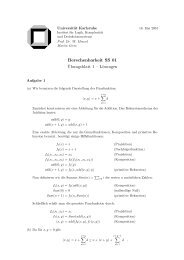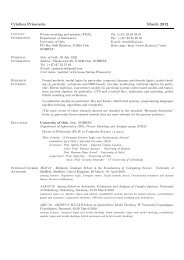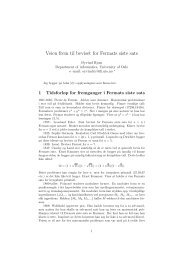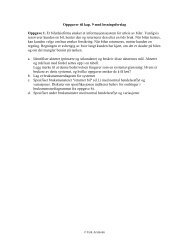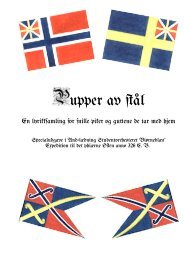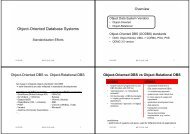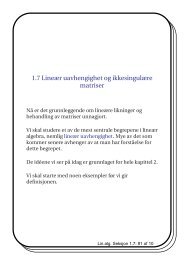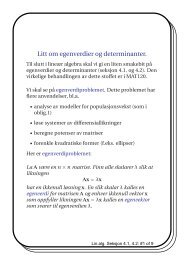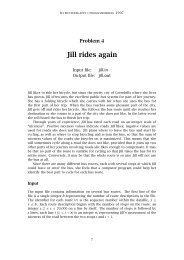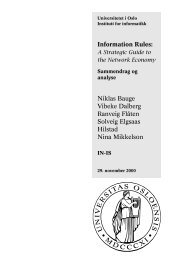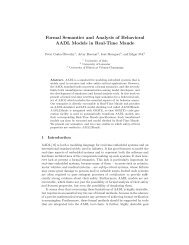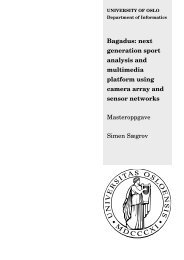Timed CTL Model Checking in Real-Time Maude⋆ - IfI
Timed CTL Model Checking in Real-Time Maude⋆ - IfI
Timed CTL Model Checking in Real-Time Maude⋆ - IfI
Create successful ePaper yourself
Turn your PDF publications into a flip-book with our unique Google optimized e-Paper software.
<strong><strong>Time</strong>d</strong> <strong>CTL</strong> <strong>Model</strong> <strong>Check<strong>in</strong>g</strong> <strong>in</strong> <strong>Real</strong>-<strong>Time</strong> Maude 11<br />
Then, we can have a sequence of only maximal tick steps (where we only show<br />
the atomic properties valid <strong>in</strong> the correspond<strong>in</strong>g states)<br />
p 3<br />
−→ p <strong>in</strong>st<br />
−→ q −→ · · · (¬p ∧ ¬q forever)<br />
that does not satisfy the formula ϕ, whereas if we can “split” up the maximal<br />
tick step <strong>in</strong>to three non-maximal tick steps, where time elapses by one time unit<br />
<strong>in</strong> each tick step, we get a behavior<br />
p 1<br />
−→ p 1<br />
−→ p 1<br />
−→ p <strong>in</strong>st<br />
−→ q −→ · · · (¬p ∧ ¬q forever)<br />
which makes ϕ hold for the system. Notice that the system satisfies the two<br />
strong criteria suggested above. It is also worth mention<strong>in</strong>g that this problem<br />
also applies to timed l<strong>in</strong>ear logics. For the system R <strong>in</strong>dicated <strong>in</strong> the example,<br />
the “timed LTL” formula ¬ (✸≥1 (p U≥2 q)) is satisfied by R maxDef (r) but not<br />
by R.<br />
In the follow<strong>in</strong>g we focus on dense time, s<strong>in</strong>ce we can achieve sound and<br />
complete model check<strong>in</strong>g for discrete time by explor<strong>in</strong>g all possible tick steps <strong>in</strong><br />
the po<strong>in</strong>twise semantics, and by advanc<strong>in</strong>g time by the smallest possible nonzero<br />
duration <strong>in</strong> the cont<strong>in</strong>uous semantics. Furthermore, as already mentioned,<br />
<strong>in</strong> this paper we restrict our treatment to T<strong>CTL</strong>cb formulas under the cont<strong>in</strong>uous<br />
semantics. 6<br />
Our goal is therefore to f<strong>in</strong>d a discrete abstraction of a real-time rewrite<br />
theory R, so that model check<strong>in</strong>g the abstraction (under the po<strong>in</strong>twise semantics)<br />
is equivalent to model check<strong>in</strong>g R under the cont<strong>in</strong>uous semantics. One part of<br />
our solution is to make sure that time progress “stops” at any time po<strong>in</strong>t when a<br />
time bound <strong>in</strong> the formula could be reached. This can be achieved if we split any<br />
tick step by an amount that divides all possible maximal tick durations and all<br />
possible f<strong>in</strong>ite non-zero time bounds <strong>in</strong> the formula. Let ¯r be the greatest common<br />
divisor of the durations of all maximal tick steps <strong>in</strong> R maxDef (r) reachable from the<br />
<strong>in</strong>itial state and each f<strong>in</strong>ite non-zero time bound <strong>in</strong> the formula; then “stopp<strong>in</strong>g”<br />
at each <strong>in</strong>terest<strong>in</strong>g time po<strong>in</strong>t should be acheieved if we divide each maximal<br />
tick step <strong>in</strong>to smaller steps of duration ¯r.<br />
However, the follow<strong>in</strong>g example shows that it is not sufficient to always advance<br />
time by this greatest common divisor ¯r to obta<strong>in</strong> a sound and complete<br />
abstraction under the cont<strong>in</strong>uous semantics. Consider a (dense-time) theory R<br />
that has only one behavior <strong>in</strong> terms of maximal tick steps, which we show here<br />
<strong>in</strong> terms of validity of the atomic proposition p <strong>in</strong> the correspond<strong>in</strong>g states:<br />
π = ¬p 1<br />
−→ ¬p <strong>in</strong>st<br />
−→ p <strong>in</strong>st<br />
−→ ¬p 1<br />
−→ · · · (¬p forever)<br />
That is, a p-state is reachable <strong>in</strong> exactly time 1, and ticks do not change the<br />
valuations of the atomic propositions. In this model all maximal tick steps have<br />
6 We are currently work<strong>in</strong>g on releas<strong>in</strong>g the restriction to closed bounds. However,<br />
our proof for the completeness result cannot be directly extended to T<strong>CTL</strong> formulas<br />
with open bounds.



